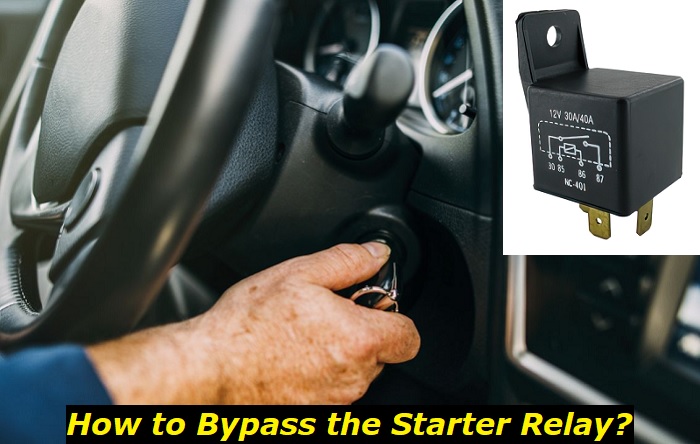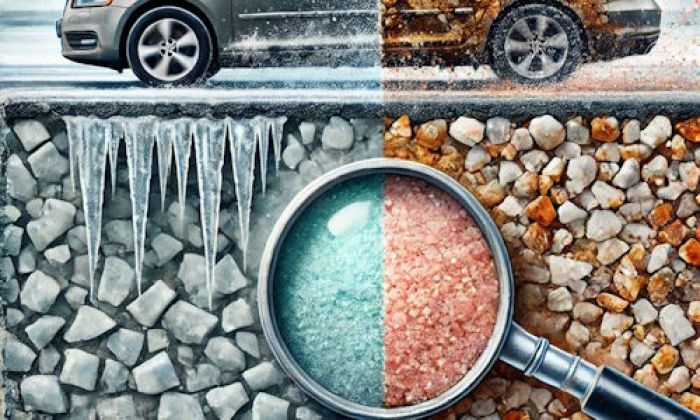The starter relay is an important component of your car's electrical system. It is responsible for providing power to the starter motor, which in turn starts the engine. If your starter relay fails, your car's engine will not start.
Relay problems highlights
- Level of urgency:medium
- DIY inspection:possible but complicated
- DIY repairs:possible
- Can you drive?depending on the relay in question
- Price of repairs:$30 - $250
- Ifignored:certain functionswon'twork
- Ways to fix:checking the relay is difficult,professional help may be needed

Ways to Bypass the Starter Relay
There are different situations where knowing how to bypass the starter relay comes in handy. If your car won't start, the starter relay may be the culprit. You can bypass the relay to get your car running again.
Another condition where bypassing the starter relay can come in handy is if you want to start your auto without using the Starter button. This can be helpful if your car has a manual transmission wherein you don't want to use the clutch pedal switch to start the engine or the clutch pedal itself is malfunctioning.
Finally, if your car has an electronic ignition system and you're having trouble starting it, you can try this method to see if that solves the problem.
There are different ways to bypass the starter relay. The most common is through the use of a jumper wire. This involves connecting one end of the jumper wire to the positive terminal of the battery and the other end to the starter motor. This will bypass the relay and allow power to flow directly to the starter motor.
An alternative way to bypass the starter relay is to remove it from the circuit entirely. This can be accomplished by disconnecting the wires that connect it to the battery and the Starter button. With the relay removed, power will flow directly from the battery to the starter motor.
Follow these steps to bypass the starter relay in your car:
- Locate the starter relay. It is usually located near the battery or Starter button.
- Use a jumper wire to connect the positive terminal of the battery to the starter relay.
- If your car has an electronic ignition system, disconnect the wire that connects the starter relay to the ignition switch.
- If your car has a manual transmission, disconnect the wire that runs from the starter button to the clutch pedal switch.
- Start the engine and drive to a nearby service station or dealership for repairs.
If all else fails, you can always call and wait for a tow truck that will bring your car to a nearby service station or dealership for repairs.
Situations Where Bypassing the Starter Relay is Useful
Bypassing the starter relay should come in as your last resort because it comes with certain risks especially if you are not a trained technician or mechanic. It is only recommended in situations when there's no other help in sight.
This comes in handy if you are stuck in the middle of nowhere and you have trouble asking for help. It can also be useful during emergencies when time is of the essence.
However, if you are not time-bound and you have convenient access to a tow truck, call for their services by any means. A lot of things can go wrong if you go on experimenting with the electric components of your car and these include potential safety hazards.
What Could Go Wrong?
There are plenty of things that can go wrong when you try to bypass the starter relay. Keep in mind that there is a good reason why the manufacturer of your car has designed its circuitry as it is. It's primarily made that way to provide checks and balances between its electrical and mechanical components.
As the engine bay has become more and more complicated in new car models, bypassing the starter relay may result in the following issues:
- First, you could damage the battery by connecting it directly to the starter relay.
- Second, you could mess up the starter relay itself by connecting it straight to the battery.
- Third, you could short-circuit the electrical system in your car by connecting the jumper wire incorrectly.
- Fourth, the wiring may come in contact with other parts that may interfere with the proper flow of current in the starter.
- Fifth, you could start a fire by improperly wiring everything together or if they are exposed to the other flammable elements of the engine bay.
- Lastly, problems may develop gradually and these can be potentially dangerous if the vehicle's electrical system suddenly malfunctions while you are driving on the road, especially at high speeds.
These are just some of the potential risks involved in bypassing the starter relay. It's important to be aware of them before attempting this procedure yourself. If you're not comfortable doing it, it's best to leave it to a professional.
Common Causes of a Malfunctioning Starter Relay
In most cases, bypassing the starter relay can only serve as a temporary remedy. As mentioned, it can also come in with certain risks. Instead of doing that, better come up with a permanent or long-term solution.
So, if you are having trouble with your starter relay, you should consider diagnosing the cause of the problem and come up with a way to address it. The following elements could be the possible reasons for your starter relay issues:
1. Drained Battery
Before anything else, make sure that there is enough power supply coming from your battery. A drained battery can, of course, cause plenty of electrical issues with your car, and having trouble starting is among them.
Use a multimeter to see if the battery is providing power to the starter relay. First, disconnect it from your car. Then, use the multimeter to test the voltage between each wire and ground. If the voltage is below 12 volts, then the battery is likely drained and will need to be recharged or replaced.
2. Damaged Wiring
If the starter relay's wiring appears damaged, it may need to be changed. In the absence of physical signs, you can use a multimeter to check.
Start by disconnecting the battery from the car. Next, use the multimeter to test the resistance between each wire and ground. If there is no continuity between any of the wires and ground, then the wiring is likely damaged and will need to be replaced.
3. Loose Connections
If the starter relay's connections are loose, they may need to be tightened or changed if the connectors are already worn.
4. Dirty Contacts
If the starter relay's contacts are only dirty, they may only need cleaning. However, if the contaminant has already corroded its harness, the component has to be replaced.
5. Faulty Solenoid
The solenoid is responsible for physically engaging and disengaging the starter gear. If it is faulty, it may not be able to properly kickstart the starter gear, which could cause the relay to malfunction.
If the starter relay's solenoid is faulty, it can be checked with a multimeter for resistance similar to the process of checking the wires. If there is no continuity between any of the wires and ground, then the solenoid is likely faulty and will need to be replaced.
6. Burnt-Out Coil
The coil is responsible for providing electricity to the solenoid. If it is burnt out, it will need to be replaced. Again, the multimeter is your friend here if you suspect that the coil may be burnt out. Just check for its resistance, and if there's no continuity, that means it's already fouled and needs to be replaced.
7. Worn-Out Brushes
The brushes are responsible for transferring electricity from the coil to the solenoid. They must be changed if they are worn out.
8. Malfunctioning Starter Relay Assembly
The starter relay is responsible for supplying electricity to the starter motor. It is usually activated when the key is turned in the ignition. If it is not working properly, the car may not start. So, if the starter relay's housing or internal components are damaged, the relay itself may need to be replaced.
Conclusion
Bypassing the starter relay should only be considered as a last-ditch effort if no other alternatives are available to get your car to a mechanic immediately or during emergencies because of the numerous risks associated with the process. The best solution for this problem is always to have it fixed by a professional.
There are plenty of other electrical and mechanical components that may prevent you from starting your car or that may be indirectly hindering the proper function of your starter relay. However, the most common are the ones shown here, and these should provide you with a good head start in your initial diagnosis towards a more lasting solution.
About the authors
The CarAraC research team is composed of seasoned auto mechanics and automotive industry professionals, including individuals with advanced degrees and certifications in their field. Our team members boast prestigious credentials, reflecting their extensive knowledge and skills. These qualifications include: IMI: Institute of the Motor Industry, ASE-Certified Master Automobile Technicians; Coventry University, Graduate of MA in Automotive Journalism; Politecnico di Torino, Italy, MS Automotive Engineering; Ss. Cyril and Methodius University in Skopje, Mechanical University in Skopje; TOC Automotive College; DHA Suffa University, Department of Mechanical Engineering






Add comment